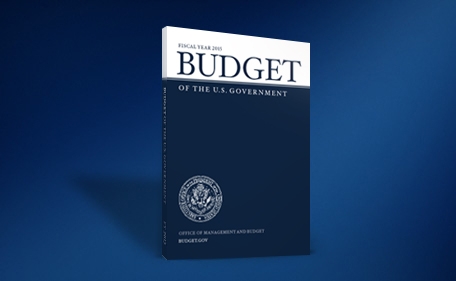An Overview of Obama’s Budget

The President wants to spend $4 trillion between 2015 and 2016. However, his budget plan supports highly ambitious goals; ones that include free community college, increased domestic and military spending and supports infrastructure. He plans to subsidize this spending through increased taxes on big business and taxing profits overseas. The Office Management of Budget promises “reforms to health programs, our tax code, and immigration”.
Four trillion dollars may sound like a scary number, but it is not far from the proposed 3.7 trillion dollar budget last year. The deficit is also a decrease from 2013’s proposed deficit of $783 million or 4.2% of the nation’s GDP, at $483 million or 2.5% of the nation’s GDP.
President Barack Obama was very adamant about his position on ‘middle-class economics’. He bolstered his position saying: “[in] 58 months we have created over 11 million jobs. Our unemployment rate is now lower than it was before the financial crisis. More of our kids are graduating than ever before. More of our people are insured than ever before.”
“[Middle-class economics] means helping working families feel more secure in a world of constant change,” the President said in last month’s State of the Union address.
Our country currently sits at over $18 trillion dollars in debt, and the plan also proposes to reduce $1.8 trillion over a 10-year period. The $483 million deficit will add to the projected $6 trillion debt over the next decade.
More than $3 billion will be assigned to science, technology, engineering, and math education (STEM). Sixty billion will back the plan for free community college over ten years. Another $478 billion will support public infrastructure such as bridges, roads, and transit systems. The budget promises to support senior citizens by strengthening retirement income security. It also backs a Pay-As-You-Earn plan for student loans, which lets students pay no more than 10% of discretionary monthly income. Domestic and military spending will also see a seven percent increase. Climate-change and renewable energy technologies will help to withdraw $50 billion from natural gas and oil industries in tax breaks. Sequestration will be eliminated, and government departments would no longer face automatic budget cuts.
A $238 billion revenue will also be generated from a 14% tax on $2 trillion made overseas by US companies.
“I want to work with Congress to replace mindless austerity with smart investments that strengthen America,” Obama said in a speech at the Department of Homeland Security.
A plan of this scale has been met by the Republicans with serious opposition. The GOP has rejected many parts of the budget, already branding the budget as “dead on arrival”.
Republicans have already rejected many of the central planks of Mr. Obama’s budget, previewed by the president since the start of the year.
Chairman of the Ways and Mean committee Paul Ryan, the gatekeeper of the budget, also disagrees with the budget.
“The kicker is, with even all of these tax increases, you don’t even balance the budget, not even in ten years, because you don’t get spending under control,” Ryan said.
Republican Senator Rob Portman argues the $2.1 trillion tax raise only increases the burden on citizens and the spending never balances out.
“Our budget will cut waste. It will spend smarter, putting efficiency and effectiveness of government at the top of the agenda,” Portman said. “It’ll recognize that you already pay enough in taxes, and instead propose pro-growth policies that create an environment where good paying jobs can thrive. It’ll put us back on the path towards the kind of balanced budgets you have the right to expect.”
The House Republican budget focuses instead on growing the economy, repealing Obamacare, providing simple tax code, and working to cut spending. The budget would cut spending by $5.1 trillion over the next ten years.
With a general lack of consensus, it is highly unlikely Obama will see his budget passed in even a similar form.
FSA Practice Questions
- Does the Republican Party support Obama’s budget?
- What does the word consensus mean?
- What are the highlights of the plan?
- How much debt is the United States in?
- Is the plan likely to pass?
Your donation will support the student journalists of Freedom High School - FL. Your contribution will allow us to purchase equipment and cover our annual website hosting costs.

Kevin “K.Chow” Chow is currently a senior at Freedom High School. He was born in Auckland, New Zealand and his family relocated to Australia and Tampa....




